Description
The Black Pyramid Butterfly (Zosters), scientifically known as Hemitaurichthys zoster, is an elegant and striking fish with a maximum size of approximately 8 inches (20 centimetres). It features a triangular-shaped pattern with a dark black colouration and a vibrant yellow vertical stripe above its head.
Natural Habitat
In their natural habitat, Black Pyramid Butterflyfish are found in the tropical waters of the Indo-Pacific region. They inhabit coral reefs and reef slopes, often dwelling in areas with abundant coral growth and rocky crevices. These fish prefer areas with moderate water flow and ample hiding places among coral formations.
Keeping Black Pyramid Butterfly Zosters Healthy:
Keeping the Black Pyramid Butterflyfish healthy requires providing them with a well-maintained aquarium that replicates their natural habitat. They have a moderate care level and are suitable for intermediate-level hobbyists. It’s important to ensure stable water parameters, including a temperature range of 75°F to 82°F (24°C – 28°C) and a pH range of 8.1 to 8.4. Regular water changes and the use of a protein skimmer are recommended to maintain optimal water quality.
Special Requirements and Feeding
Black Pyramid Butterflyfish have a specialized diet consisting of small invertebrates, zooplankton, and coral polyps. In captivity, they should be offered a varied diet that includes high-quality frozen and live foods such as brine shrimp, mysis shrimp, and finely chopped seafood. Providing a mix of prepared foods and live options will help ensure their nutritional needs are met.
How Many Should I Keep?
Black Pyramid Butterflyfish are typically kept as solitary individuals or in pairs. They can exhibit territorial behaviour towards conspecifics, so it’s advisable to provide them with ample space in the aquarium. It’s important to consider the tank size and compatibility with other tank mates when determining the number to keep.
Lighting Preference
These fish prefer moderate to high lighting in the aquarium, which mimics the bright and vibrant conditions of their natural reef habitat. Proper lighting is essential for their overall well-being and the growth of associated photosynthetic organisms in the tank.
Suitable Tank Mates
Black Pyramid Butterflyfish can coexist with other peaceful reef fish species. However, caution should be exercised when selecting tank mates to ensure compatibility in terms of size, temperament, and feeding habits. Avoid housing them with overly aggressive or territorial fish that may harass or outcompete them for food.
Reproduction in the Wild
Reproduction in the wild for the Black Pyramid Butterfly (Zosters), is an intricate process that involves various stages and behaviours. These fish are known to engage in group spawning, which increases their chances of successful fertilization and survival of the offspring.
The reproductive cycle of Black Pyramid Butterflyfish is often influenced by environmental factors such as seasonal changes, lunar cycles, and water temperature. These factors play a crucial role in triggering the spawning behaviour of these fish. As the conditions become favourable, the fish begin to exhibit courtship behaviours and prepare for reproduction.
During courtship, the male Black Pyramid Butterflyfish will display vibrant colours and perform intricate courtship dances to attract the attention of the females. These displays can include fin flaring, circling, and darting movements. The male also establishes and defends a territory to impress the females and deter rival males.
Once courtship is successful, the female will release her eggs into the water column. The eggs are buoyant and float freely in the water. At the same time, the male releases his sperm, which fertilizes the eggs externally. The fertilized eggs are then left to develop and hatch into larvae.
The newly hatched larvae of Black Pyramid Butterflyfish are tiny and transparent, drifting in the water column. They possess a large yolk sac that provides them with nutrients during their early stages of development. These larvae are considered pelagic, meaning they spend a significant portion of their early life drifting with ocean currents.
Breeding Hemitaurichthys zoster in Detail
- Set Up:
To facilitate successful breeding, a separate breeding tank should be set up with appropriate conditions. The tank should provide ample hiding places such as live rock or artificial structures, as well as suitable water parameters including a temperature range of 78°F to 82°F (25°C – 28°C) and a pH range of 8.1 to 8.4.
- Courtship/Spawning:
During courtship, male Black Pyramid Butterflyfish exhibit vibrant colours and engage in elaborate displays to attract females. Once courtship is successful, the female releases her eggs into the water column while the male releases his sperm to fertilize them. The fertilized eggs then float freely in the water.
- Rearing:
After spawning, it is crucial to promptly remove the fertilized eggs from the main tank to prevent predation by other fish. The eggs should be transferred to a separate rearing tank with controlled water parameters and gentle water flow. The eggs typically hatch within 24 to 48 hours, and the larvae will feed on microscopic plankton.
Sexual Dimorphism
Black Pyramid Butterflyfish do not exhibit significant sexual dimorphism, meaning it is challenging to visually distinguish males from females based on physical characteristics alone. Both sexes share similar colouration and body shape.
Distribution
The Black Pyramid Butterfly (Zosters) is naturally occurring in the Indo-Pacific region, specifically in areas such as the Red Sea, Maldives, and the Great Barrier Reef. These fish can be found in their original wild form and are not typically associated with captive-bred or line-bred strains.
Summary
The Black Pyramid Butterflyfish (Hemitaurichthys zoster) is a visually captivating fish with its black colouration and striking yellow stripe. While reproducing in the wild, they engage in group spawning where multiple individuals release their eggs and sperm simultaneously. Breeding in captivity involves setting up a separate tank, facilitating courtship and spawning, and ensuring the proper rearing of the larvae. These fish do not exhibit significant sexual dimorphism, and their distribution spans the Indo-Pacific region. Overall, the Black Pyramid Butterflyfish requires careful attention and a suitable breeding setup to successfully reproduce in captivity.
The Fish pictured here are representative only and the livestock you receive may vary in pattern, coloration, and shape.

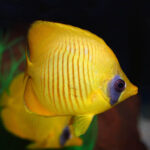
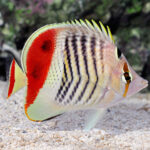
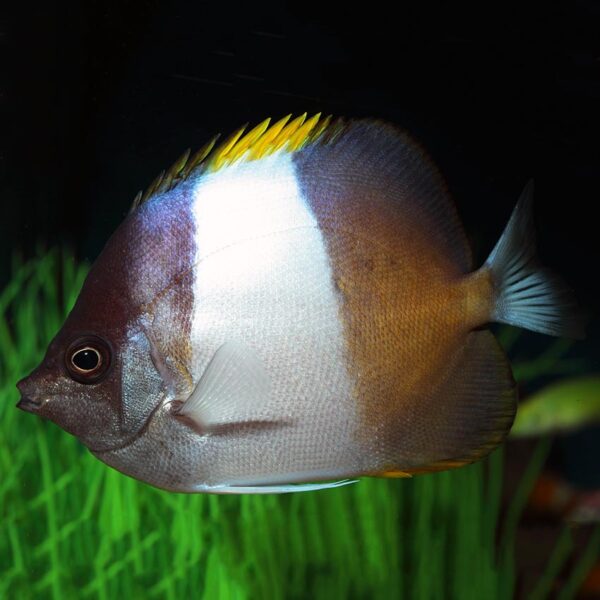

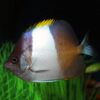
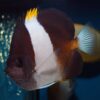

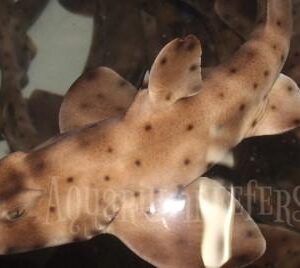

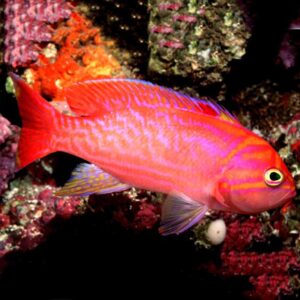
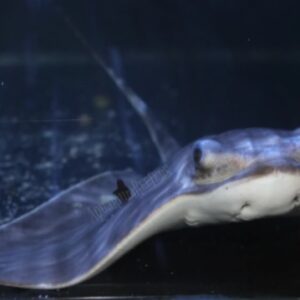
Reviews
There are no reviews yet.